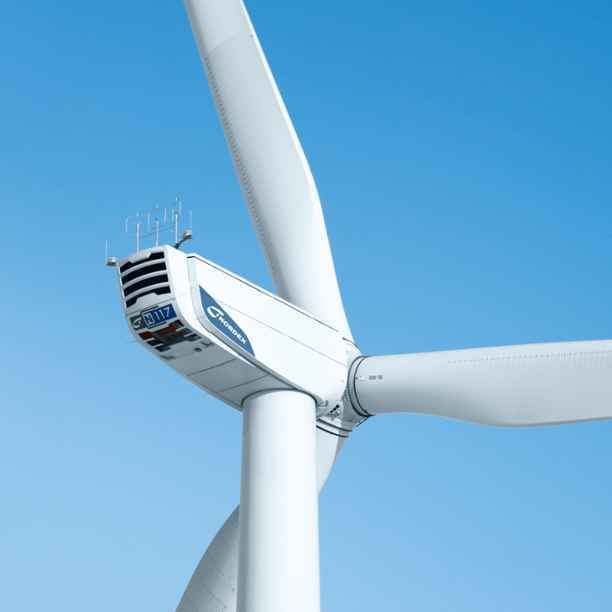There is growing awareness among governments, regulators and producers that the solar industry’s current design and manufacture must be improved with maximum consideration for emissions, waste and future circularity. Resource waste across the solar panel lifecycle occurs through a lack of design attention for modularity, repairability and recyclability. Moreover, incentives for appropriate recycling and disposal of components at their end-of-life are limited. The new wave of solar panels must not only generate cheap, accessible energy, but also avoid harm to the environment through pollution and solar panel waste.
Solar energy is key in the energy transition
The European Union aims to meet 45% of its energy generation needs from renewables by 2030, with a key role for solar energy. An important goal in this trajectory is to make solar panel production and recycling more circular and environmentally friendly. To meet this challenge, European manufacturers are critically looking into producing solar panels in a way that contributes to a sustainable clean energy transition, while remaining commercially competitive with China, the world’s largest producer. Most of the solar panels currently in use are made in China, which makes it difficult to influence how solar panels are designed, produced and recycled.
In the US, the Inflation Reduction Act (IRA) aims to stimulate solar energy production through tax credits and tariffs on Chinese solar panels. The intention of these measures is to rebuild the US solar industry, encouraging development of durable and recyclable solar technologies. The act is designed to facilitate a solar energy transition in the coming years.
How to make solar panels fit for the future
We will soon face a two-fold challenge: the scarcity of the raw materials needed to produce solar panels and the waste of those same materials at the end of the solar panels’ lifecycle. To prevent this, we need to go beyond designing panels based on commercial and durability criteria and focus more on design that both extends the life of solar panels and improves their recyclability.For example, by making solar panels easier to disassemble, repair or recover the valuable materials they contain.
During the manufacturing phase, raw material inputs and energy consumption need to be optimised and the release of greenhouse gases, as well as the accidental release of hazardous substances (such as cadmium or lead), needs to be minimised. We also need better practices in the sourcing of raw materials like silicon, copper, silver, iron and zinc. These resources are not only likely to become scarce, but the way they are mined also raises a host of concerns around labour conditions and human rights. Forced labour of Uyghurs in China’s Xinjiang region and child labour in mining and quarrying are of particular concern.
Most solar panels used around the world currently end up in landfill at the end of their life. We can avoid this by improving recycling technologies and capacities. But we can also do more in the ‘use’ and ‘consumption’ phase of the panels’ lifecycle to prevent waste and bring the supply chain into alignment with the EU’s Waste Framework Directive. We can explore ways to extend the life of resources and solar panels, for instance through continued use in less energy intensive applications. Designing and producing solar panels according to circular principles is essential in the transition to a more sustainable energy industry.
Unlocking capital for change
The scale of the challenges means that we must take urgent action to create the sustainable and affordable solar panels of the future. Research & development is moving in the right direction. Several European projects have been launched to unlock the value contained in end-of-life solar panels. The EU recently funded the construction of automated pilot facilities to disassemble solar panels – to recover the valuable materials contained in the panels and process them for new applications. There are also companies involved in the entire solar panel lifecycle including designing and producing panels that allow for disassembly, repair and refurbishment. These panels can be recycled at a high value at end-of-life, and the companies use open-source technology that enables standardisation and collaboration among producers.
Further improvements in the lifecycle of solar panels comes from targeted investments and financing activities. Through its small-and midcap strategy, Triodos Investment Management invests in First Solar, a listed US company producing solar panels for the utility-scale market. First Solar works with closed-loop production and recycling of solar panels to minimise water, energy and input materials where possible.
In conclusion, we have to re-think parts of the solar panel value chain to ensure better conservation and re-use of resources – as well as ways to minimise pollution. Solar power must become a resource-efficient energy product and continue to help build resilient, accessible global energy systems. Taking positive action to reduce, reuse and recycle is essential in creating a more circular and sustainable solar panel industry fit for the future.
Going forward, we will learn more about the scale of waste from solar panels and recyclability options and we must not forget that the waste generated by other sources, including fossil fuel processes and other waste streams, still puts solar panels in a relative better position.


